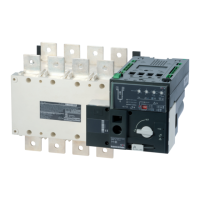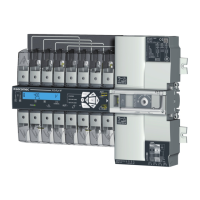What to do if socomec ATyS g M does not switch over when the Priority SOURCE is restored?
- KKristin CunninghamAug 16, 2025
If the Socomec Switch doesn't switch over when the Priority SOURCE is restored, check the state of the "Priority Source Availability" LED. If this LED is off, refer to the troubleshooting steps for when the "Priority Source Availability" LED does not come on.











